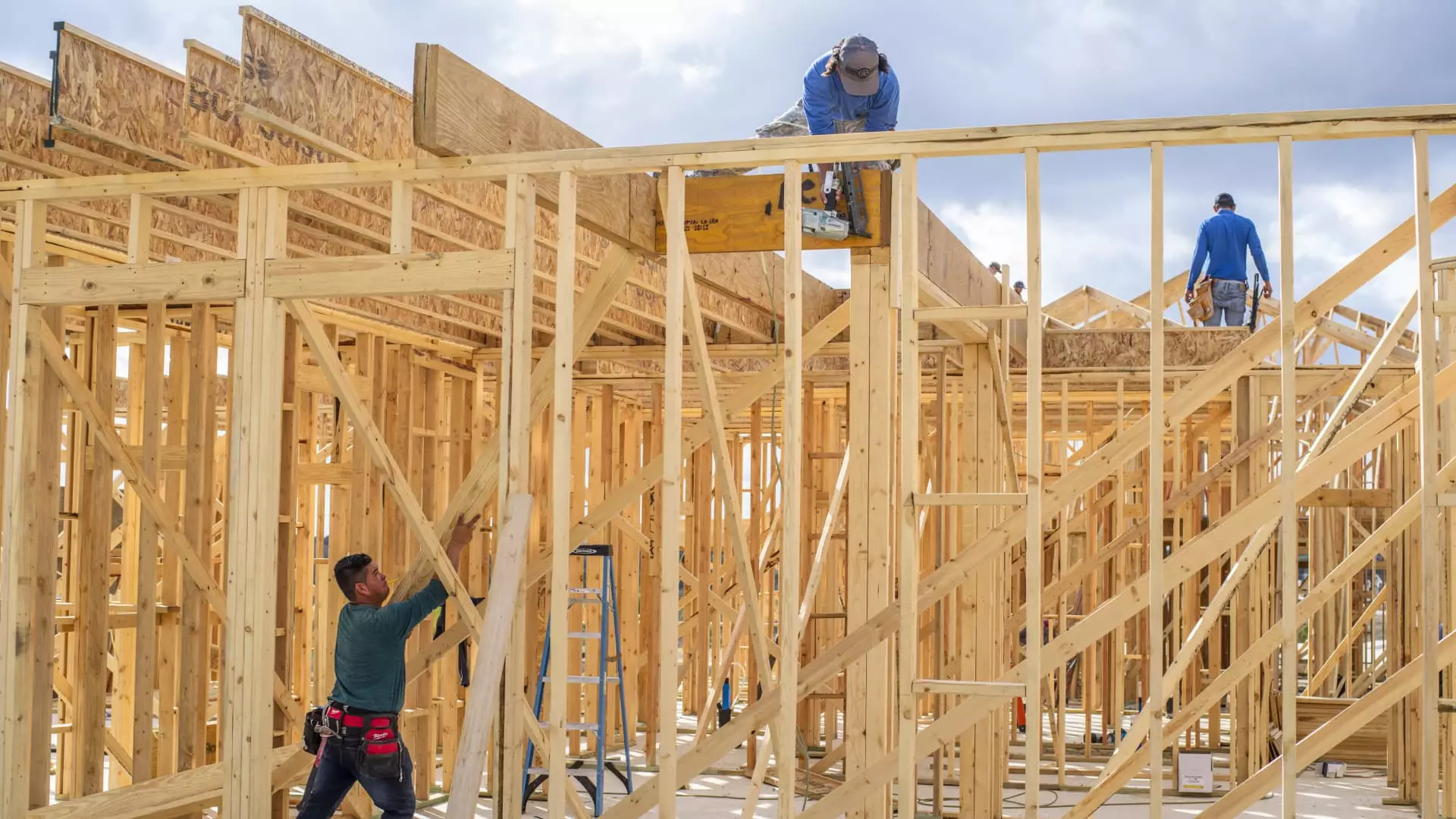The recent dip in sentiment among single-family homebuilders indicates a troubling trend in the housing market. The National Association of Home Builders’ Housing Market Index (HMI) plummeted by five points in February, reaching a level of 42. This marks the lowest sentiment in five months, signifying a shift in builder confidence that merits significant attention. An HMI reading below 50 is seen as a signal of negative sentiment, and the numbers from February suggest that builders are increasingly wary of the market conditions. This decline stands in stark contrast to February of the previous year, when the index was recorded at 48, highlighting a significant deterioration in builder outlook.
Several key factors have contributed to this downturn in builder sentiment. Central to the decline is the worry surrounding tariffs that are poised to escalate building costs substantially. Tariffs on Canadian lumber and various household appliances, which make up a considerable portion of construction expenses, create an environment of uncertainty. This concern is amplified by the comments of NAHB Chairman Carl Harris, who notes that while there is hope for pro-development policies, the ongoing cost concerns and regulatory uncertainty have cast a shadow over builders’ expectations for 2025.
The three components that comprise the HMI paint a grim picture: current sales conditions fell to 46, buyer traffic to 29, and future sales expectations dropped to 46—revealing a cautious outlook across the board. This decline affects the overall stability of the housing market, as lower sales expectations can directly correlate with a reduction in new housing projects initiated by builders.
Adding to the turmoil in builder sentiment are the elevated mortgage rates, which have remained stubbornly high. As of the beginning of 2024, the average rate on a 30-year fixed mortgage surpassed 7%, climbing from previously more accommodating rates in the 6% range. High borrowing costs erode affordability, a factor that already plagues many potential buyers. This double whammy—higher costs of borrowing and escalating home prices—hands buyers an arduous challenge in an already competitive market.
The compounding nature of these factors means that even with a lean supply of existing homes for sale, the demand is not sufficient to spur growth in new construction. As builders juggle between the rising costs and a dwindling buyer pool, the dynamics of supply and demand tip further toward a supply crunch rather than a market recovery.
Future Outlook and Implications for Builders
As homebuilders grapple with these challenges, the outlook for the upcoming market seasons appears cautious. The spring housing market, traditionally a period of growth, may face headwinds due to insufficient supply as housing starts trend lower than last year. Notably, the sentiment drop is particularly concerning, as it indicates a slower path to recovery for the industry. Builders have begun to notice a dwindling buyer demand, a situation echoed in the commentary of executives from leading construction firms like PulteGroup.
Ryan Marshall, CEO of PulteGroup, highlighted in the company’s Q4 earnings report the negative impact of sustained high mortgage interest rates on buyer demand. The statistics further illuminate this issue—only 26% of builders reported lowering prices in February, down from 30% in January. This figure, the lowest since May 2024, suggests that sellers are increasingly hesitant to decrease prices in response to reduced demand.
The sentiment among single-family homebuilders is in decline due to multiple interconnected factors that threaten the stability of the housing market. While it remains to be seen how policymakers will address tariffs, affordability challenges, and regulatory reforms, it is crucial for builders to adopt strategic adaptations in response to this tumultuous environment. As they navigate heightened costs and buyer hesitance, homebuilders must remain vigilant and agile to mitigate adverse effects and explore innovative solutions that may reignite confidence in both the market and among potential homebuyers.

